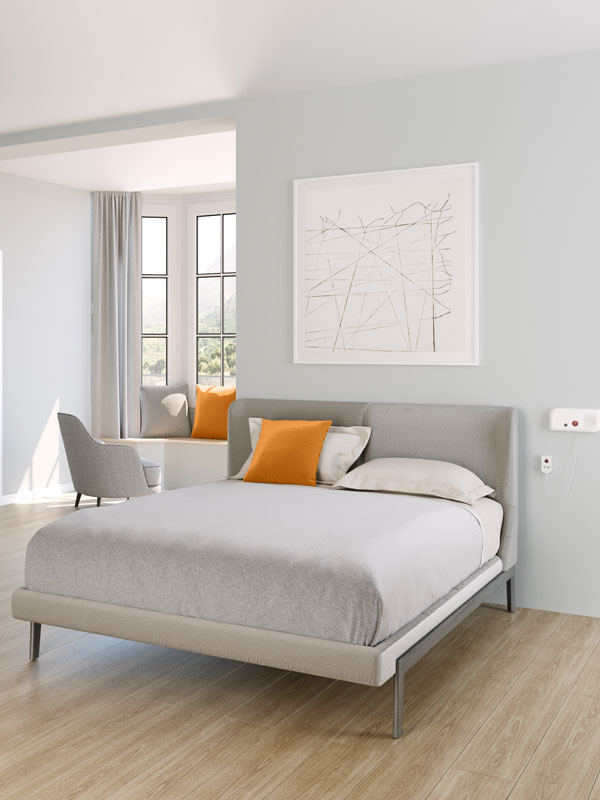In the current society, the technology advances quickly, and we have to adapt to it. In the healthcare sector, to innovate is a need to grow and improve. The healthcare technology is “any action used to promote the health, with the aim of preventing, diagnosing or treating a disease in short or long term. Any health technology used for the welfare of the patient”
Now, the changes suffered in nurse – patient call system along the years will be explained:
-
Systems based on electrical systems.
As they are systems without intercommunication, when an alarm is generated, the staff must go to the room to know what happens, as the alarms are only reflected in the hallway light. They are the simpliest systems, and they were developed to comply with the general rules of Spain and Europe.
- Inconvenient
- Systems without intercommunication, it’s necessary to go to the room to know what is happening, that causes excess of workload slightly useful in the healthcare personnel.
- There is no software: It is not possible to take the control of the performed tasks, the motives of the alarms, the person who attends the patients…
2. Systems based on electrical systems with intercommunication
When an alarm is generated, the staff receives it in the checkpoint, the system is integrated with the intercommunication, contacting with the room and being able to know what happens without going to the room
- Inconvenients
- There is no software: It is not possible to take the control of the performed tasks, the motives of the alarms, the person who attends the patients…
- Advantages
- System with intercommunication, it’s possible to know what happens from the checkpoint.
3. Systems integrated with telephony
System with intercommunication and integrated with the telephony of the center. The healthcare personnel receive the alarms, in addition to the checkpoints and hallway lights, in the wireless phones, so they can know what happen in each room, regardless of their location.
- Inconvenients
- There isn’t software, or identification of the attendant.
- Advantages
- System with intercommunication and integrated with telephony, they can know what happens without being in the room.
- The healthcare personnel have mobility, receiving the alarms in the wireless although they aren’t in the checkpoint.
4. Systems integrated with telephony with identification of the attendant
System with intercommunication, integrated with the PBX and RFID readers. It unifies the needs of telecommunication of the centers, with the call system, the PBX and the wireless management.
- Advantages
- The healthcare personnel have complete mobility; receive the alarms in the wireless.
- Workers have RFID cards allowing to register all actions that perform.
- It has software: All records performed are stored in the software, that generates custom reports where it’s possible to see people who have come to the room and the tasks that have performed -> Traceability.
- Integration with other management systems (HIS).
At the same time; these systems can be analogical or IP. The current tendency is the availability of a complete solution of health communication in which all communication services of the center are integrated, to optimize its use, to facilitate its operation and maintenance, and all from a software solution perfectly integrated.
A system with IP technology must incorporate standards of VoIP, based on SIP protocol, with the possibility of PoE power, to optimize its integration and installation.
- Advantages
- System with intercommunication and integrated with PBX.
- Staff has RFID cards, allowing to register all actions.
- Management software to have traceability.
- Maximum reliability.
- Control and security assistance: All alarms are stored in a database. It is a fault-tolerant system, in case of communication error; the information is stored locally in the IP terminals until it recovers the connection.
- Simplicity of use and easy implementation
- Compatibility with any communication system, fixed or wireless.
- Optimization installation and wiring costs.
As we can observe, the most important evolution has been in two main directions:
- The incorporation of the nurse – patient call system to the general communication of the health center, allowing to optimize the work of the care personnel.
- The incorporation of calls and tasks management system, with identification of the personnel that are performed (RFID cards), which provides the traceability of the performed tasks, with the following improvement of the care quality.
The welfare quality in these cases is set by international certifications of the same, which in the case of hospitals is defined by the Joint Commission. This is based on the traceability of all process performed in the health center.

